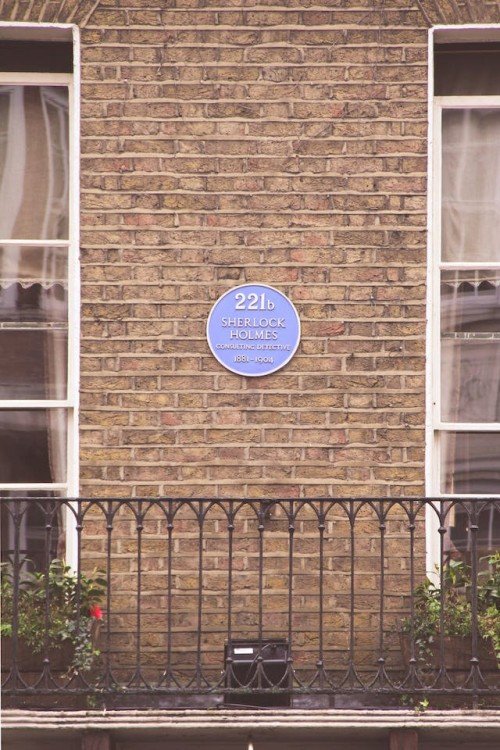Sherlock Holmes and Taxis: Navigating London's Mysteries

In Sir Arthur Conan Doyle's classic tales of mystery and deduction, the enigmatic Sherlock Holmes is known for his astute investigative skills and unwavering pursuit of justice. While the intriguing cases and Holmes' brilliant mind take center stage, a lesser-known yet significant aspect of his escapades involves his strategic use of taxis in traversing the labyrinthine streets of Victorian London.
Sherlock Holmes: A Master of Transport
In the bustling metropolis of London, where horse-drawn carriages and omnibuses dominated the streets, Sherlock Holmes often relied on the emerging mode of transportation – the taxi. With its swiftness and convenience, the hansom cabs and four-wheelers became indispensable tools in Holmes' arsenal.
Whether dashing across town to a crime scene or tailing a suspect through the labyrinthine streets, Holmes' ability to order a taxi swiftly aided his quest for truth. These modes of transport were not just conveyances but strategic elements in his meticulous investigative methodology.
Taxis: A Crucial Element in Holmes' Methodology
Holmes' penchant for efficiency extended to his choice of transportation. The prompt and reliable nature of taxis facilitated his timely arrival at crime scenes, enabling him to gather crucial evidence swiftly. Their role wasn't merely to ferry him from place to place but to assist in piecing together the intricate puzzles of his cases.
Ordering a taxi became an intrinsic part of Holmes' investigative routine, often serving as a command post where he and Dr. Watson discussed clues, formulated theories, and planned their next moves. These vehicles doubled as mobile offices, offering privacy and seclusion for Holmes' brilliant deductions to take shape.
Taxis: Beyond Convenience, Ensuring Safe Transfers
In tales where safe transfer from airport or ensuring secure transportation was a concern, Sherlock Holmes' reliance on taxis demonstrated a deeper level of safety and security awareness. Holmes was keenly aware of the need for safe passage, especially when dealing with sensitive or dangerous situations.
In instances where swift and secure transportation was imperative, Holmes would carefully orchestrate the use of taxis to ensure a safe transfer for himself, Dr. Watson, or any parties involved in his investigations. The ability to order a reliable taxi was pivotal in maintaining the security and confidentiality of their movements.
The Legacy of Holmes and Taxis
Sherlock Holmes' association with taxis has left an indelible mark on literature and popular culture. His innovative use of this emerging mode of transportation in the Victorian era not only showcases his adaptability but also highlights the evolution of transportation methods during that time.
The image of Holmes hailing a cab or directing a driver through London's winding streets has become an iconic representation of the detective's resourcefulness and adaptability in navigating both the physical and intellectual landscapes of his investigations.
The Strategic Role of Taxis in Holmes' Investigations
Sherlock Holmes' reliance on taxis extended far beyond mere convenience; it was a strategic tool in his investigative repertoire. Order Taxi services were crucial in instances where time was of the essence. In "The Adventure of the Blue Carbuncle," Holmes, faced with a time-sensitive case, swiftly ordered a cab to pursue vital leads. The expediency of transportation facilitated by the taxis enabled Holmes to prevent further mischief and ultimately solve the case.
Transportation in Holmes' world wasn't solely about movement; it was about ensuring Safe Transfer from Airport and secure conveyance for his clients or witnesses involved in sensitive cases. In "A Study in Scarlet," Holmes' meticulous planning involved arranging secure taxis to transport those whose safety was paramount, demonstrating his meticulous attention to every detail of his investigations.
Taxis as a Means of Multifaceted Communication
Holmes' interactions with taxi drivers provided more than just transportation; they offered valuable sources of information. The drivers, adept in navigating the city's intricate streets, served as unintentional informants. Their insights into various neighborhoods, current events, and local happenings often proved invaluable to Holmes, aiding him in piecing together puzzles that seemed insurmountable.
Moreover, Holmes' keen observations extended to the nuances of transportation. He would often deduce information from the condition of a cab or the behavior of a driver, utilizing these observations as additional clues in his investigations.
The Evolution of Transportation and Sherlock Holmes' Legacy
The use of taxis in Sherlock Holmes' adventures reflects the evolving transportation landscape of the late 19th century. As cities expanded and technologies progressed, taxis became a symbol of modernity and convenience. Holmes' seamless integration of this emerging mode of transportation into his investigative methodology showcased his adaptability to the changing times.
Even today, the legacy of Sherlock Holmes' association with taxis endures in literary discussions and adaptations. His ingenious use of these vehicles remains an inspiration, highlighting the importance of quick, reliable transportation in solving mysteries and ensuring safe transfers, resonating across generations of readers.
In Summary
Sherlock Holmes' reliance on taxis was more than a narrative convenience; it was a strategic choice that accentuated his unparalleled investigative prowess. The ease, speed, and versatility offered by taxis became indispensable tools in his pursuit of truth. From facilitating swift movements across London to ensuring safe transfers and gathering valuable insights, taxis served as multifaceted instruments in Holmes' investigative arsenal.
Through Sherlock Holmes' adventures, we recognize the intrinsic link between transportation and detective work. The strategic use of taxis not only elevated the intrigue of his investigations but also showcased the significance of timely and secure transport in navigating the complexities of solving mysteries, making the partnership between Sherlock Holmes and taxis an iconic facet of literary history.